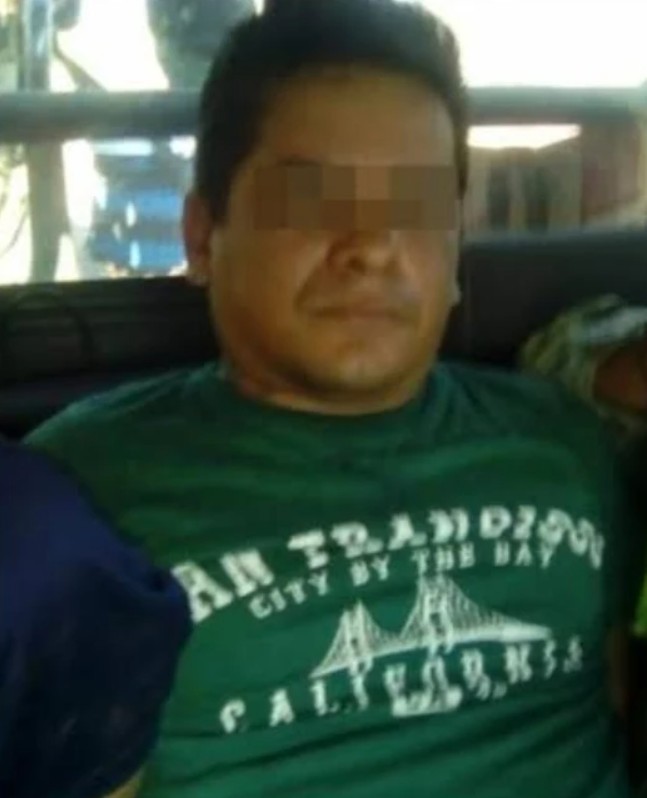Yo Quiero Agua Video Gore and Shaking Mexico
The escalating violence between Mexico’s cartels continues to spiral into shocking levels of brutality. A recent video, known as “The Yo Quiero Agua Gore,” has sent waves of fear and disgust through both rival cartels and the public. This graphic footage, attributed to the Cártel Jalisco Nueva Generación (CJNG), depicts the torture and eventual execution of a man allegedly associated with the Familia Michoacana. It’s a calculated message from CJNG to its rivals, showcasing the lengths it is willing to go to maintain control.

Contents
The Incident and Details of the Video
The video, which quickly gained infamy, showcases the brutal handiwork of a CJNG hitman known as “El Payaso” (The Clown). Although the exact moment of his execution is not captured, the severe injuries inflicted upon him suggest he was killed shortly after the recording.
Uncensored quiero agua video leaked in Mexico causes shock
The victim, now referred to as the “Mexican Ghost Rider” due to the nature of his injuries, was a resident of Cotija, a municipality in Michoacán. His tragic fate underscores the peril faced by those caught in the crossfire of Mexico’s ongoing cartel wars.
The gruesome nature of this act stands out even in the context of cartel violence. “El Payaso” has garnered a reputation for his horrifying methods, but this particular act removing the victim’s facial skin while he was alive—is one of the most shocking examples of his cruelty. This calculated savagery serves a dual purpose: instilling fear in rivals and sending a clear message about CJNG’s dominance and ruthlessness.
The victim’s death was likely planned as a public spectacle, with the video intended to circulate widely. This tactic is not new among cartels, which frequently use such footage to intimidate rivals and maintain control over their territories. The moniker “Mexican Ghost Rider”, given to the victim, has only amplified the notoriety of this incident.
Implications for Cartel Rivalries
Message to Familia Michoacana
This act of violence was undoubtedly aimed at sending a chilling warning to the Familia Michoacana. By showcasing such an extreme level of brutality, CJNG is demonstrating its willingness to go to any lengths to eliminate its rivals. The timing and execution of the act suggest it was carefully orchestrated to provoke fear and weaken the resolve of Familia Michoacana members.
Potential Retaliation
The Familia Michoacana is not known for backing down. While there has been no immediate response from the group, fears are growing that retaliation could target “El Payaso’s” family or associates. Such reprisals could escalate the cycle of violence in the region, as both cartels vie for dominance. This ongoing tit-for-tat warfare has left countless victims in its wake, with innocent civilians often caught in the crossfire.
Narco-Messages and Territorial Control
Narco-messages, often left alongside the bodies of victims, are a common tool in cartel warfare. These messages serve to assert control over territories and issue threats to rivals. It is widely speculated that the victim’s body will soon be discovered in Cotija, accompanied by a message from CJNG reinforcing their dominance in the region. This form of psychological warfare is as much about instilling fear as it is about physical violence.
Public and Law Enforcement Reaction
Impact on Local Communities
The residents of Cotija and Aguililla, like many in cartel-dominated areas, live in a state of constant fear. Incidents like this one only heighten the sense of insecurity and helplessness among the population. Many are forced to endure the violence in silence, as speaking out or cooperating with authorities can lead to severe repercussions.
Law Enforcement’s Role
Law enforcement in Mexico faces significant challenges in combating cartel violence. Corruption, underfunding, and a lack of resources have left many agencies unable or unwilling to confront powerful criminal organizations like CJNG. In regions like Michoacán, the cartels often operate with impunity, further eroding public trust in the authorities. The absence of a strong law enforcement response to this incident underscores the difficulties of addressing the broader security crisis.
Broader Implications
Desensitization to Violence
One of the most concerning aspects of incidents like this is the desensitization to extreme violence. Videos like “The Yo Quiero Agua Gore” are not only used as propaganda but also contribute to a culture in which such brutality becomes normalized. This has profound implications for Mexican society, particularly for younger generations exposed to such graphic content.

Psychological Warfare in the Narco-Conflict
The use of public executions and torture videos is a hallmark of psychological warfare in Mexico’s narco-conflict. By disseminating these videos, cartels aim to intimidate their rivals, control local populations, and deter potential informants. This strategy has proven effective, as fear often paralyzes both communities and authorities, allowing cartels to consolidate their power.
Escalation of Violence
This incident is a stark reminder of the ever-escalating violence in Mexico’s cartel wars. Each act of brutality raises the stakes, leading to a cycle of revenge and retaliation that shows no signs of abating. The competition for control over lucrative drug trafficking routes and other criminal enterprises continues to drive this violence, with devastating consequences for those caught in its wake.
The torture and execution of the “Mexican Ghost Rider” by CJNG hitmen is a grim reflection of the brutality that defines Mexico’s ongoing cartel conflict. This act was not just an isolated incident but a calculated move to intimidate rivals and assert dominance. As the cycle of violence continues to escalate, the residents of Michoacán and other affected regions are left to bear the brunt of this conflict. Without significant changes in policy and enforcement, the bloodshed is likely to persist, leaving a trail of destruction and despair in its path.
Efforts to address the root causes of cartel violence, including poverty, corruption, and weak governance, are urgently needed. Until these issues are tackled, incidents like this one will remain a horrifying reality, serving as a stark reminder of the human cost of Mexico’s drug war.
Hot News -Logan Guminski Dog Video and Explicit Content
Ari Kytsya Starbucks Video Original and Controversial Leak
Mo3 Shooting Video and Rapper Tragic Death
Ms Pacman Gore Video and The Disturbing Truth Behind
3 Guys 1 Hammer Video and the Dnipropetrovsk Maniacs
Sophie Rain Spiderman Video and Everything You Need to Know
Jay Wheeler Video Viral and The Controversy

